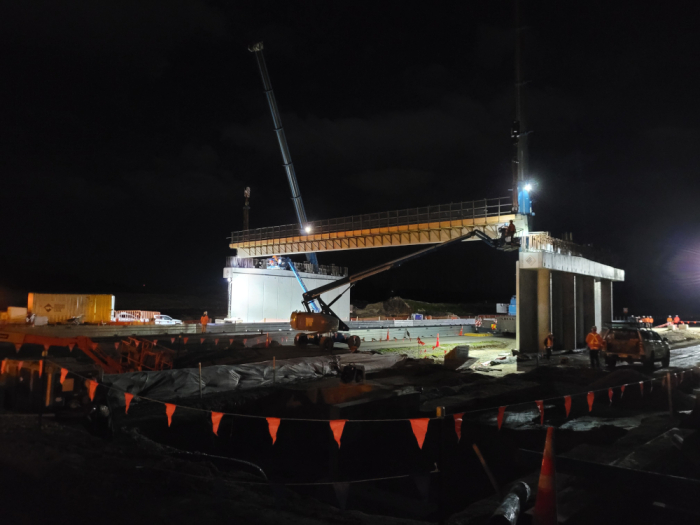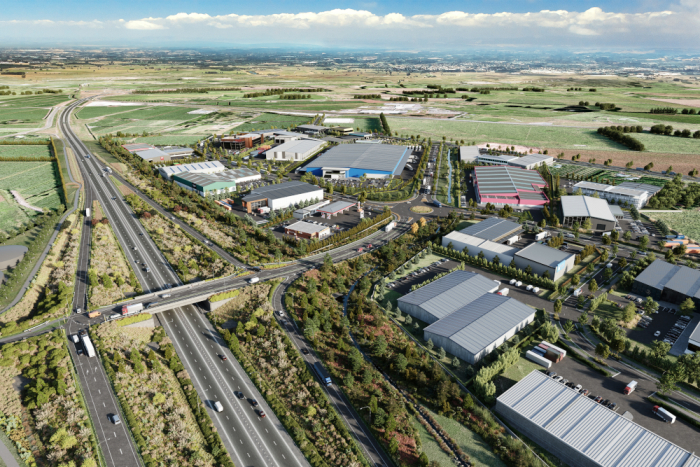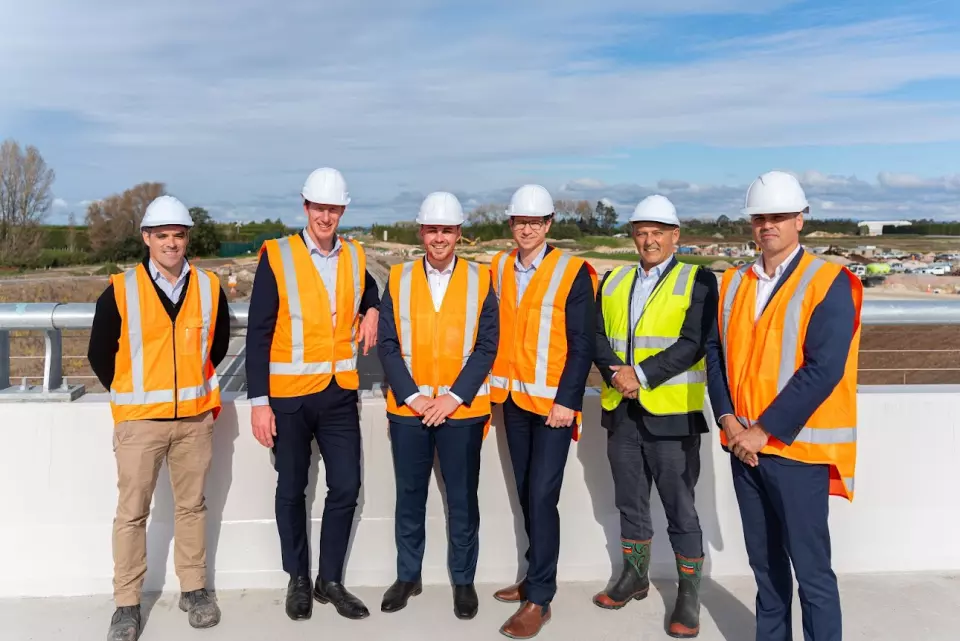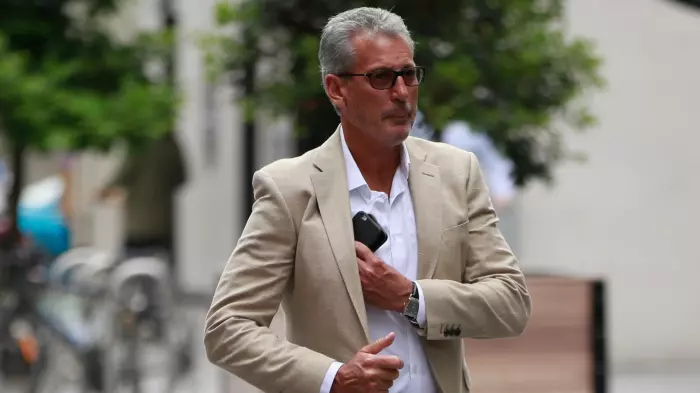148ha Rangiuru Business Park blueprint for infrastructure projects
Developers know only too well about the constraints, delays and challenges – like gaining consents – in getting major projects off the ground. The Rangiuru Business Park in Tauranga is now unveiling its first stage in what might come to be regarded as a copybook example of beating those challenges.
The Bay of Plenty’s newest, future-focused, industrial business hub is a blueprint, says the CEO of Quayside Holdings, Lyndon Settle, for how New Zealand’s notorious infrastructure deficit and shortage of industrial land can be overcome.
The Park’s development has meant looking through past economic cycles to assess the best way to bring long-term, future benefit to the region. Many resource consents were needed and have been secured, as well as ongoing engagement with a variety of stakeholders and partners – an essential part of buy-in, not just from local authorities but from people impacted by such a large and important development.
 Installation of eight large beams onto Rangiuru Business Park Interchange Bridge.The collaboration between lead investor and developer Quayside, mana whenua (Tapuika) and local government is an illustration, Settle says, of how to bring critical New Zealand infrastructure projects to fruition collectively. This next generation of infrastructure projects, required to address the growing infrastructure deficit, are typically large-scale, complex initiatives.
Installation of eight large beams onto Rangiuru Business Park Interchange Bridge.The collaboration between lead investor and developer Quayside, mana whenua (Tapuika) and local government is an illustration, Settle says, of how to bring critical New Zealand infrastructure projects to fruition collectively. This next generation of infrastructure projects, required to address the growing infrastructure deficit, are typically large-scale, complex initiatives.
“They need to deliver transformational social, cultural, environmental and economic outcomes– often costing more than $1 billion. These large-scale projects also require several years to deliver access to appropriate funding resources, to plan and build, to involve central government, local government, iwi, community and the private sector working together.
“I think this is a good example of how Quayside has taken a lead role in respect to that, but we have also had to rely – appropriately so – on a wider funding base, which includes funding from Central government via the Provincial Growth Fund.
“The Western Bay of Plenty has grown rapidly since the turn of the century and, because of this, we have a shortage of industrial land which has been in demand due to the attractiveness of the region, location in the Golden Triangle, and proximity to Aotearoa’s largest port.
 Rangiuru Business Park Render
Rangiuru Business Park Render“From a regional perspective, Rangiuru provides us with much needed capacity and a favourable location on the eastern side of Tauranga city.”
A critical factor in planning for the region is to have industrial areas, where a significant amount of work is created, close to residential areas. Rangiuru is well placed in this respect, being closer to Papamoa and Te Puke, enabling employers to be close to staff, improving access to work and productivity,” says Nigel Tutt, CEO Rangiuru Business Park Render for Bay of Plenty Economic Development Agency, Priority One.
Quayside are now bringing the first stage of around 15ha of industrial land to the market with titles of various sizes available, according to tenant demand. The Business Park is located alongside State Highway 2, with a dedicated motorway interchange providing access to all major North Island and global markets via the Port of Tauranga just 25km away.
They’ve also received enquiries from corporate New Zealand who are looking at 5-10ha sites. Rangiuru Business Park is a greenfield site, so the first businesses on the ground get the ability to determine what the scale that they require to future-proof their own business.
Industrial vacancy rates are incredibly low in the region, around one per cent. That low capacity combined with the fact that the region is one of the fastest growing in the country, meant there is a need for the Park to play an essential role in fulfilling some of that demand and bring additional capacity to the region.
Rangiuru Business Park will be a massive enabler of economic growth for the Bay of Plenty. With 148ha zoned industrial land for development to fill, the Park will play a huge role in providing more employment opportunities for anyone wanting to move to the Bay of Plenty or expand operations.
Economically, the Bay of Plenty continues to be one of the main drivers of New Zealand’s GDP, so the Park will also play a significant role in how the region supports that.
Enabling infrastructure such as the interchange, wastewater, potable water and stormwater are all critical to unlocking and maximising the full potential of the Park. The infrastructure alone has delivered around $9 million of economic activity to the region each month over the past 6 months, with an average of about 200 people on site, undertaking those works.
The Park is well located, central to Tauranga, Te Puke, Whakatane and Rotorua. This means access to excellent employment opportunities with an active workforce.
Western Bay of Plenty District Council CEO, John Holyoake says: "Rangiuru Business Park stands as a beacon of opportunity, setting a new standard for future developments across the wider Bay of Plenty region.
“Bringing the largest greenfield consented industrial zone in the Bay of Plenty to life requires bold thinking and partnership – addressing immediate infrastructure deficits. We’re proud to be working closely with Quayside, key partners and tangata whenua on this Kaupapa to deliver this strategically important development.
“Aligned with regional sustainability and connectivity goals, the park promises substantial industrial growth, reduced environmental impacts, and long-term economic prosperity.
“The eastern area is a key growth zone for the Western Bay. It’s our area of the future and Rangiuru Business Park is the catalyst to this potential. This development not only unlocks significant industrial opportunities but also sets the stage for future housing projects."
As well as the social and employment aspects, Quayside has put considerable thought and planning into environmental markers, with a 50ha wetland being put into place – designed to cope with stormwater requirements. The wetland will be a natural asset not only to the Rangiuru Business Park but to the whole region.
“The relationship we have with Tapuika, who are mana whenua, is one we hold very dear to our hearts,” says Settle. “They've been actively involved in building a cultural masterplan for the Park, and establishing the wetland which includes the planting of over 400,000 plants, providing environmental reclamation, in addition to employment opportunities.
New Zealand has had a tough time economically in the last 12-24 months, he says, and it’s essential projects like this have kept people employed and businesses afloat, bringing short to medium-term benefit as well as long-term prosperity.
For more information: rangiuru.co.nz
Hero- Standing on the Rangiuru Business Park Motorway Interchange Bridge: John Shanahan, Sam Uffindell, Tom Rutherford, Minister Chris Penk, Lyndon Settle and Michael Jefferies. (L to R)






